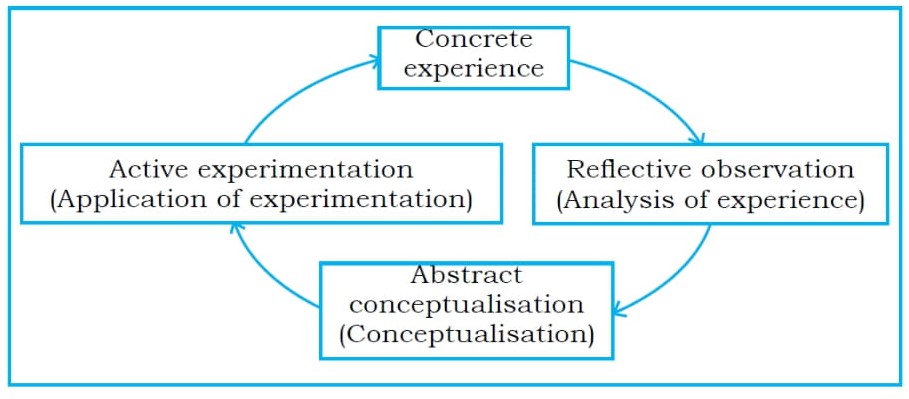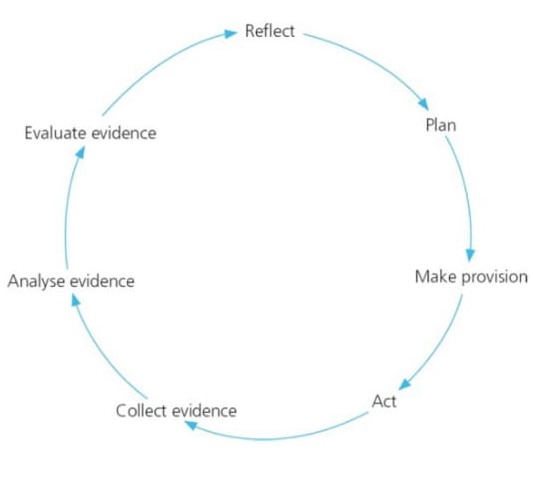Latha Vydianathan
Reflective practice is the process of reflecting/introspecting/thinking about what you do and how you do it. Thinking about what happened is a trait common to human beings. The key difference between ‘casual thinking’ and ‘reflective practice’ is that the latter requires conscious effort to think about events and develop insights from them. When it comes to teaching, reflection is of paramount importance in ensuring that teachers are constantly working on improvising their methodologies. Reflection helps teachers improve their professional skills and helps identify their strengths and limitations.
Effective teachers must first admit that no matter how well they transact a lesson, there is always room for improvement. Teacher reflection is important because it’s a process that helps teachers collect, record, and analyze everything that happened during the teaching of the lesson. It allows teachers to move from just experiencing to understanding. Reflective practice benefits not only the teacher but the school as a whole. It creates a foundation for continuously improving teaching and learning. This practice creates a sense of team spirit and peer learning amongst teachers.
Teachers can team-up and offer each other support. This helps to develop good practice across the school, resulting in a more productive working environment.
What are the advantages of reflective practice?
- Understanding learners– Reflective practice helps teachers understand the abilities and needs of their learners as the teacher has to get into the students’ shoes when reflecting on his/her methodologies.
- Develop reflective learners– Reflective teachers are instrumental in developing reflective learners.
- Independent learners– Imbibing the practice of reflection helps students become independent learners, by analyzing, evaluating and improving their own learning.
- Professional development– Self-reflection allows teachers to create and experiment with new ideas and approaches leading to their own learning and development.
- Humility – Self-reflection needs to be done with utmost honesty. Honest with ourselves about our choices, mistakes, success, on what could have been done better. This practice acts as a reminder to stay humble and continue working hard.
- Enhances problem solving- The practice allows teachers to devise strategies and map out personalized techniques for their struggling students.
A few reflective practice tools:
- Self-questioning: Questioning oneself about the effect and efficiency of teaching.
- Discussing with peers: Drawing on support from peers will cement understanding and be involved with others’ ideas and best practices.
- Student feedback: Teachers must interact with students and reflect together. This provides scope for the students to play an active part in learning.
- Reflection journal: Instructors might consider capturing a few details of their teaching in a journal to create an ongoing narrative of their teaching across terms and years.
- Teaching portfolio: Though less focused on classroom practices, a portfolio is an opportunity to reflect on teaching overall.
There are umpteen ways in which a teacher can get into the habit of reflective practice. It is definitely a skill that can be learnt. Essentially the practice consists of 6 Rs:
- Responding
- Repairing
- Reviewing
- Reasoning
- Reassessing
- Reworking
Four stages of adult learning

Although critical reflection plays a crucial role in teacher education, busy work life tends to take over and many educators forget to take a step back, look at the practice from a different perspective and identify areas of improvement to better support student learning. When teachers reflect and collect information regarding activities in their classrooms and take the time to analyze, they can identify more than just what worked and what didn’t. This kind of self-awareness is a powerful ally to a teacher. Reflective teaching is a cyclical process in which the teacher monitors, evaluates and revises her own practice continuously. It is a dynamic process which is intended to lead through successive cycles towards higher quality of teaching.

Educational researchers have long promoted the importance of reflecting on practice to support student learning and staff development. There are many different models of reflective practice. However, they all share the same basic aim: to get the best results from the learning, for both the teacher and the students.
**Pictures courtesy: NCERT-A handbook towards preparing a Reflective Teacher
The author is an educator and has deep interest in the integration of life skills with literature for a purposeful and peaceful life. She can be reached at latha.vydianathan@yahoo.com.
